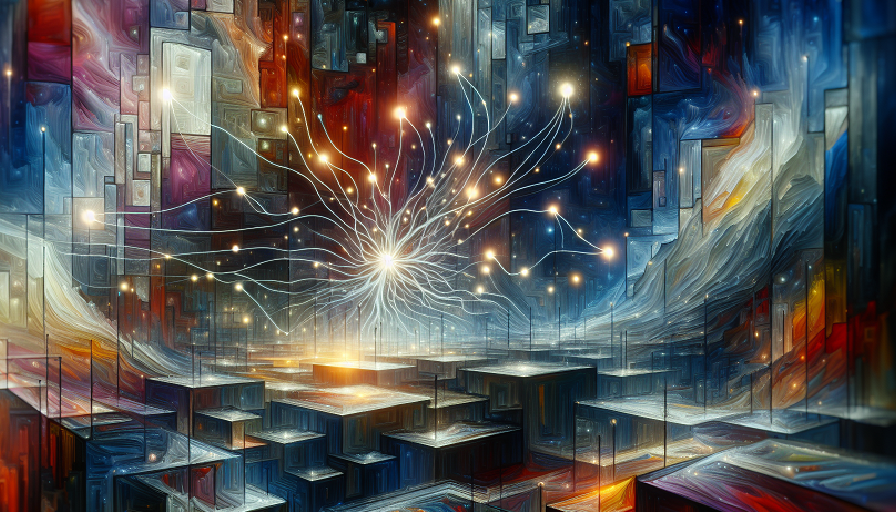
Close your eyes. Picture your childhood home. Can you see the color of the front door? The texture of the sofa? The way the light hit the kitchen table in the morning?
If so, you’ve just activated your mind’s eye—your brain’s ability to generate images without direct sensory input. It’s a form of mental visualization so common, we hardly notice it. But its existence is one of the most fascinating quirks of human cognition. How can we “see” what isn’t in front of us? And how is it possible that some people can’t visualize anything at all?
Welcome to the blurry intersection of memory, imagination, and perception—where visualization happens in the dark, and the brain paints pictures with neurons instead of light.
Contents
What Is the Mind’s Eye?
The “mind’s eye” refers to our ability to form mental images—sometimes vivid, sometimes vague—of objects, people, places, or scenarios without seeing them. This form of internal visualization supports many cognitive functions:
- Memory recall (retrieving a face, location, or sequence)
- Spatial awareness (navigating a familiar room in the dark)
- Creative imagination (visualizing a story, artwork, or invention)
- Motor rehearsal (mentally practicing a dance move or golf swing)
It’s not just daydreaming—it’s how your brain simulates the world when the senses are offline. This is also why guided meditations and visualizations are so effective: your brain doesn’t need eyes to “see.”
The Neuroscience of Mental Imagery
When you picture something in your mind, you’re not just imagining it metaphorically—your brain is literally activating visual-processing regions, even without external input. Functional MRI scans show that the visual cortex lights up during mental imagery, especially in areas involved in interpreting shape, color, and motion.
Key Brain Areas Involved
- Occipital lobe: Processes visual information, even during imagination
- Parietal lobe: Supports spatial orientation and attention
- Frontal cortex: Helps plan and manipulate mental images
- Hippocampus: Links imagery to memory and emotional context
In essence, your brain reuses its visual machinery for internal simulation. It’s a cost-effective way to rehearse actions, reflect on the past, or invent new possibilities—all without needing to move a muscle.
Why Some Minds Visualize More Clearly Than Others
Not everyone experiences the mind’s eye in the same way. Some people can conjure detailed mental pictures with ease—down to textures and movement. Others only see faint impressions, while some (about 1-3% of the population) experience aphantasia—a condition where the mind’s eye is essentially blind.
People with aphantasia report understanding concepts and remembering facts, but not forming images. If you say “red apple,” they might recall what an apple is, but they won’t “see” one in their head. Conversely, individuals with hyperphantasia experience intense and vivid mental imagery, sometimes rivaling actual sight.
What Affects Visualization Ability?
- Genetics: Imagery vividness tends to run in families
- Brain connectivity: Stronger communication between frontal and visual cortices enhances imagery
- Experience: Artists, musicians, and athletes often train their visualization over time
- Emotional state: Anxiety and depression can dull or distort internal imagery
Even if your imagery isn’t naturally vivid, the brain’s plasticity means this skill can often be sharpened—just like any other cognitive muscle.
Visualization and Its Cognitive Superpowers
Mental imagery isn’t just a novelty—it’s a core tool for cognitive performance. The ability to “see” in the absence of sight helps people rehearse behaviors, organize information, and solve complex problems.
Everyday Uses of the Mind’s Eye
- Memory recall: Visualizing where you left your keys or the steps in a recipe
- Creative work: Designers, writers, and architects use internal visualization to imagine outcomes before creating them
- Athletic preparation: Mental rehearsal activates the same brain circuits as physical practice
- Problem solving: Imagining different scenarios or pathways helps simulate outcomes without risk
One study even found that visualization improves physical performance—participants who imagined themselves lifting weights gained nearly as much strength as those who physically trained, due to motor cortex activation. The mind’s eye, it turns out, isn’t just passive—it’s preparatory.
Training Your Mind’s Eye
Whether your internal images are foggy or crystal clear, you can enhance your visualization through practice. Like a camera lens, your mind’s eye can be adjusted for clarity, color, and detail.
Exercises to Improve Mental Imagery
- Object recall: Look at a simple object, close your eyes, and recreate it in your mind
- Scene construction: Try mentally walking through your childhood home, room by room
- Sensory layering: Add imagined smells, textures, and sounds to your internal picture
- Guided visualizations: Use audio tracks or scripts to prompt vivid scenarios
Even drawing from memory or telling a detailed story can flex your brain’s visualization muscles. The more you use the mind’s eye, the more responsive it becomes.
Nootropic Support for Visual Thinking
Just as nootropics can enhance focus or memory, they may also support the networks that enable vivid mental imagery. Visualization taps into attention, memory, and sensory integration—all areas supported by targeted brain nutrients.
Nootropic Ingredients That May Support Visualization
- Citicoline: Supports brain energy and attention networks, crucial for sustaining vivid imagery
- Bacopa Monnieri: Enhances memory consolidation and visual recall
- L-Theanine: Promotes calm focus, reducing visual noise and distraction during mental imagery
- Lion’s Mane Mushroom: May encourage neurogenesis, potentially supporting imaginative flexibility and connectivity
These supplements don’t install a mind’s eye where none exists—but they can sharpen focus, reduce background stress, and improve access to stored mental content—all essential ingredients for vivid mental visualization.
Seeing Without Seeing
The mind’s eye is a remarkable bridge between perception and imagination. It allows us to plan, remember, create, and rehearse in a space beyond the physical world. And though we rarely pause to appreciate it, this inner vision shapes our external reality—from decisions we make to goals we pursue.
Whether you see mental images like a movie or as fleeting impressions, your brain is doing something extraordinary: creating pictures out of neurons, not photons. In a world filled with screens and snapshots, don’t forget to tune in to the images only you can see.
Because the most powerful visions are the ones you carry inside—and they don’t require sight to be seen.

